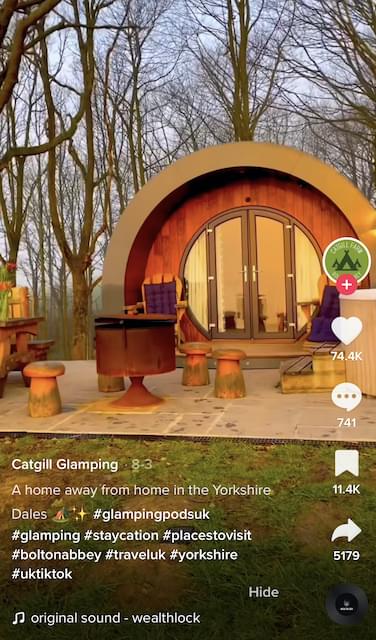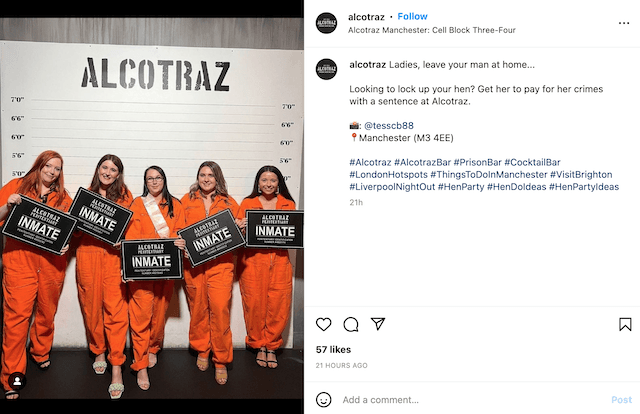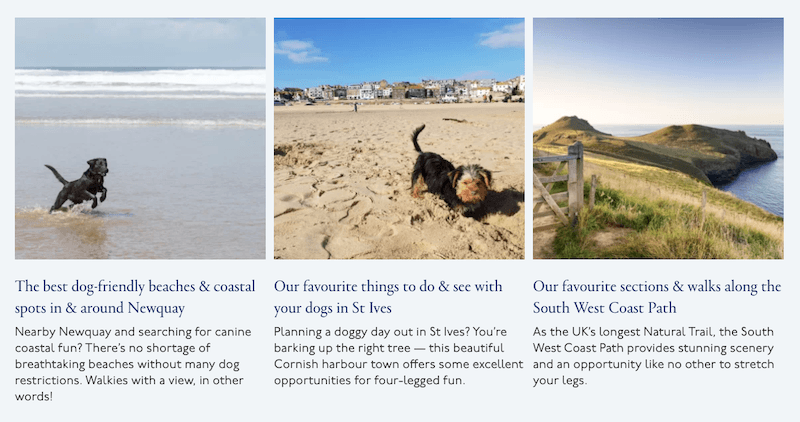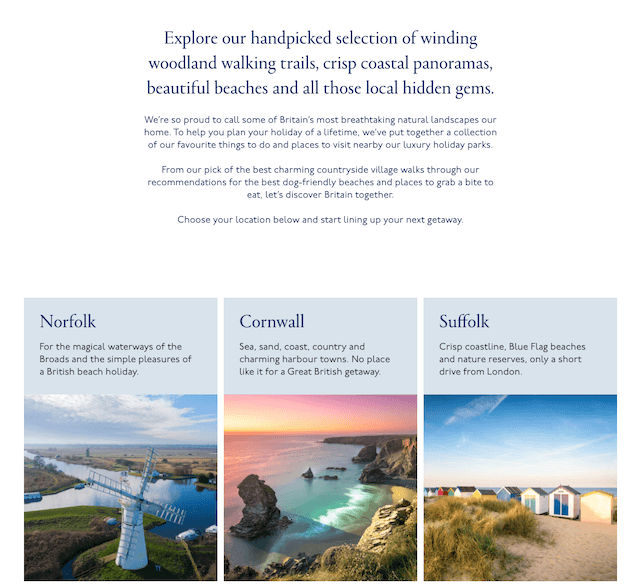Despite a bumpy ride these last few years and some distinct travel chaos relating to changing COVID-19 restrictions, it seems like the pandemic is now more firmly in our rear-view mirror and with that we’re seeing a surge in activity and an earlier recovery than anticipated for the sector. The UN World Tourism Organisation tells us that International arrivals had more than doubled in January 2022, compared with 2021 showing consumer confidence is returning and we’re ready to get back out there.
Recovery may be a long process, but Global Data found that we’re already reaching 68% of the pre-COVID-19 levels globally and this is expected to improve to 82% in 2023 and 97% in 2024, before making a full recovery by 2025 at 101% of 2019 levels -with a projected 1.5 billion international departures.
So, what does this mean for those operating in this sector? It means consumers are switched back on to travel, open to inspiration and looking to find new adventures. The challenge at this point is cutting through the noise, being the brand or opportunity that speaks to their needs and navigating potential obstacles such as new privacy and tracking changes which may impact your ability to reach audiences in the ways you did pre-pandemic.
Path to purchase in travel may have always been a slightly different one than lots of other goods and services, as people prize their travel and downtime, so decision making can often be anything but linear. Digital evolution has both boosted opportunities and complicated matters - gone are the days of the majority sitting in a travel agent and committing on the day! Travellers get inspired on social media, read reviews, plan multi-site trips with multiple operators and much more. All of this means that standing out is crucial and challenging all at once. We’ve reimagined the sales funnel into something we think fits today’s landscape and consumer behaviour more appropriately - enter the ‘messy hexagon'; it’s with this in mind, we’ve pulled together your must-read top tips for travel and tourism marketing in 2022.
Raising awareness
Awareness building activity is non-negotiable - you need to be present, consistent and memorable, because if your audiences aren’t ready to click ‘book’ just yet, it’s essential you are front and centre of their mind when they are.
There are a variety of ways you can get your brand and products/services out there into their minds and one of course is paid advertising, but we mustn’t ignore the role of channels such as PR and both paid and organic social in this build up to purchase.
1. Paid media is an important part of your journey
Paid search is something that can be a really effective way of getting in front of prospective customers, but it’s important to note that this focuses on audiences of people who are already actively searching for your products.
We often suggest utilising mixed media campaigns such as Google Ads' new Performance Max Campaigns; these allow you to reach your target audience across a range of Google properties, such as YouTube and the Display Network, which means you do not have to sit and wait for them to come to you.
Consider how you can use PPC to reach holiday makers at all stages of their booking journey. Think about when you last booked a holiday - how many searches did you perform to get to that point? How many websites did you visit? I’m betting the answer to both questions is ‘a lot!’
We also use paid social media to support this stage of the journey and build pre-search, or pre-booking awareness.
2. Utilise PPC at the beginning of their journey (pre/not ready to book)
In PPC terms, we capture users at the start of their holiday planning, create a traffic driving campaign bidding on keywords that indicate research is taking place. For example ‘best dog friendly beaches in Cornwall’ or ‘best UK city break destinations’. Campaigns featuring such keywords are unlikely to deliver a stunning return on ad spend, that is not their objective. Users searching for these terms are nowhere near ready to book. Remember, this campaign is about driving traffic to your site, and raising awareness of your brand for when they are ready.
3. Re-engage the customers you’re targeting with PPC
Once you have this additional traffic arriving on the site, you need to invest in a re-engagement strategy. By using dynamic retargeting, you can re-engage with users who have visited your site, as they continue their research. This is your chance to remind users about your amazing locations and perhaps even offer an incentive or discount. You could do this through Google Ads, Social Media or via a Programmatic Advertising platform. Many are still not ready to book, but are being fed very useful, enticing tidbits for when they are.
This can be supported with a wealth of consistent output across other channels including paid and organic social, PR and Content, more on that later.
4. Bid on the right, intent-heavy keywords and utilise location
Finally, ensure that you are bidding on intent heavy keywords. The majority of the high converting keywords that we encounter in the travel industry are made up of
A Location
A type of holiday or type of accommodation
For example - ‘family holidays in Corfu’ or ‘holiday lodge in Northumberland’.
This is where you are going to see the strongest return on ad spend. Make sure your search ads are compelling , highlighting any offers or competitive prices, and ensure that you are making use of all available ad extensions - image extensions in particular will help your ads to really pop if used correctly! Consider using dynamic search ads to find new keywords that your audience are searching for.
Some of this thinking also applies to your paid social. If your ads are national, then make your location clear in your content. Anticipate what customers might want to know about your location and feed that into your ad creative.
5. Using PR to drive and support all of your awareness activity
PR is notoriously hard to track and then there’s the old adage that people need to see things three times before they remember it. PR is awareness at its best, editorials, news stories, advertorials and more (so can be paid or organic in this case). In every sector, there are endless print and digital opportunities to find your audiences and support the stories you’re telling elsewhere. Think listicles on why your location is special, news on awards you may have won, features on things to do while there/staying with you and more.
This is why a PR strategy is key for building your reputation within the sector amongst existing and potential customers.
You can also get creative, utilising your own insights to create engaging hooks for digital PR campaigns, raising awareness of your brand and the experts behind it. This can be done by newsjacking, hopping on to potential trending stories by offering commentary – such as on the post pandemic recovery of a place or part of the sector – or use insight-led data gathered in-house; there are lots of ways you can creatively get your brand’s name out there.
6. Tap into destination hashtags
Much like with PPC, where utilising location is a boost to your return, using the right hashtags on your social posts will have a similar outcome. On TikTok, for example, there is a hashtag for every destination, from regions like #Yorkshire (1.1B views) to cities like #York (385.9M views) to towns like #Harrogate (#19.3M views ) to even villages like #Haworth (#1.7M views). So, wherever your destination is based, be sure to use the local and semi-local hashtags to reach people searching for content based on them. A recent update also means you can now also tag locations in your TikToks too.
7. Show don’t tell with diverse social content
Utilise paid social media to grab the attention of your potential customers. Inspire them with your ad content, especially if you’re prospecting for new customers. Show them what they’re missing with your ad creatives; focus on video ads to showcase all you have to offer.
8. Storytell first, sell later
Show your audiences what there is to do and why they should choose you, before pushing any sales messages to them at all. More and more people are booking holidays based on the fact they’ve seen a #HiddenGem place on TikTok and then later want to base their vacation plans around that.
9. Drive engagement
Driving engagement is essential to build on awareness and if done correctly will lead to trust, loyalty and a path to purchase. When people start to engage with your posts, it does a lot of that essential algorithm work for you, it says your meeting demand and giving the people what they want.
Travel TikTok is becoming the go-to for adventure hungry explorers and while a surprising destination, you only have to look at Binley Mega Chippy, to see that people really do believe the hype and visit the places they keep being served on their feeds. Here’s some more on driving engagement with your audiences across multiple channels.
10. User Generated Content - Let users storytell for you
Gathering and utilising user-generated content is ideal for garnering interest and a sense of real authenticity. You can boost this as paid social and really generate that sense of FOMO among interested but not yet committed audiences!
11. Utilise testimonials
A huge part of letting your audiences tell the stories for you, is to share their experiences and testimonials. Use them on the website and of course, maximise them on social media where your prospective customers may just be finding out about you and want to hear all about what you have to offer.
12. Use hooks - sink em’ in
In your video content, consider your captions, voiceovers and more to ensure they are designed to draw people in. Think commentary like: “Only people on TikTok know about this place’, or ‘The Most Secluded Place in Devon’.
As well as creating as much as you can to entice your audiences, let their fellow travellers and social media peers help out. It’s important to engage as much as possible with the authentic and exciting nature of the experiences you want to sell. Creating videos that show off your customers’ experiences such as a ‘day in the life on holiday at x’ or ‘what I ate when I went to x’ will showcase what feels like some of the most crucial elements and the things your customers really want to see, in a way that resonates.
13. Tease your audiences
Utilising video is a great way to bring people into your experience and what you’re (eventually) selling. Start your content with the hook and then put the location reveal at the end of the video, carousel or stories to ensure they watch or swipe all the way through - increased watch time will send all the right info and signals to the algorithm gods!
14. Build on what you’re hoping to sell
This is all part of providing a rich and complete picture. Through both visual and written content, keep building on things your audiences might want to do in a certain location. Provide them with insights and tidbits on nearby attractions, places to eat, sights to see and more. Not only does this help them make a plan and move closer to purchase, it shows them you understand what matters and care about more than just the sale, you’re curating an experience for them.
15. Point your efforts to the right landing page
If awareness and engagement are doing their job then you want to see an uplift in traffic, but only if the site is ready and set up to provide the best experience. When the consumer lands on your site they may be put off by poorly optimised content that doesn’t seem to fit their needs or poor user experience that slows down their scrolling, booking or reading. A complicated booking system for example could be a death knell for a prospective purchaser; don’t lose them now, focus on getting the site experience and content right.
Educating customers
What is special about your brand or destination? How are you different from your competitors? Use all the channels at your disposal to educate, enlighten and inspire your potential audiences so they trust your content to help them make those all important purchase decisions down the line.
16. Pay particular attention to user search intent
Understanding searcher intent is fundamental to all successful organic search strategies and there are times when a little extra attention needs to be paid. Many of the broad travel based searches that a user may begin their search journey with such as ‘Barcelona in May’ can be hard to pin down when it comes to true intent. Is the user looking for information on traveling to the Catalan capital at this time of year, the best things to do in the month of May, or more general information such as how busy the city is and what type of weather they might expect? Here you need to drive deep into the search results and build up a clear picture of what Google deems most relevant for the terms and topics you want to target to ensure you can provide the content your audience are looking for at each stage of their search journey, which brings us on nicely to our next recommendation.
17. Create a content hub to aid discovery
There's a lot to do and share with people when you’re talking about places, destinations and things to do, but blogs alone may not be the ticket to paradise that you hoped so instead consider a content hub. These are designed as a series of pages that address the needs of the target audience at each step of their journey and therefore echo and support other paid and organic activity taking places across the web, as well as giving those strategies something to point at if the user wants more or decides to proceed on the journey with you. They’re usually focused on one central topic that guides users through relevant information with a clearly defined structure.
Connecting your pages in this way can help to build semantic relationships between pages and improve topic authority. This helps you be seen as an authority on your chosen subject matter, unlike blog content that can be buried on a site over time, content hubs keep important content that reflect user need, at the top of the site.
18. Be creative
The design and creative execution of your ideas is a crucial part of bringing your customers into your brand and exciting them enough to stay. Travel and tourism as a sector has the benefit of inherent excitement on its side, but more so, with the right imagery and messaging can sell fairytale locations, adventurous getaways and much more. When we look to travel, we purchase based on the selling of that dream, so creativity is essential.
19. Use professional photography
When it comes to your site, professional photography is a must. We want those initial impressions to sell your brand as exactly the place your consumers want to explore. Video is great too, but it’s important to consider the size and placement of this to ensure it doesn’t backfire and slow down your site.
20. Use native fonts on your social channels
It can be tempting to be super rigid about brand guidelines and of course, your brand should be as consistent as possible across touchpoints. However, in the case of social media, using the fonts native to an app will ensure your content appears more authentic on the feed. If you’re worried about implications to your brand, focus on applying your colours of graphical elements to counter this. It can still be you, while feeling just right on that feed as people scroll.
After the ticket to travel and tourism marketing success?
If you’re looking to get away from sub-standard travel and tourism marketing, our team of experts can help. Call us today on 01423 396959 to jet off to success!
Need a hand with your marketing?
Get in touch!Post by

Amy joined in 2014 to set up our Content department. She now heads up a growing Brand and Content team, utilising over 13 years’ experience to deliver brand awareness through targeted, multi-channel copy. As well as engaging content for websites and blogs, Amy delivers PR strategies and tone of voice exploration, helping clients to communicate the purpose and values of their brand with maximum impact.
Project
Post by

Our SEO Lead with over 10 years’ experience. James calls on an extensive knowledge of search and works closely with our content marketing team to deliver targeted, results-driven SEO strategies.
Project
Post by

Extreme's resident Instagram queen, Beth lives and breathes all things social media! After graduating with a degree in Advertising, she explored all aspects of the digital world before firmly finding her feet in the land of social. Day to day, you can find her brainstorming for campaigns, drafting up witty content and strategising to help clients soar on social.
Project
Post by

Lucie is our lead on all paid media activity, overseeing our talented paid media team and managing the strategy and implementation of all paid search campaigns across multiple platforms. Fully Google qualified and working directly at Google prior to joining Extreme, there's not much Lucie doesn't know about PPC!
Project








